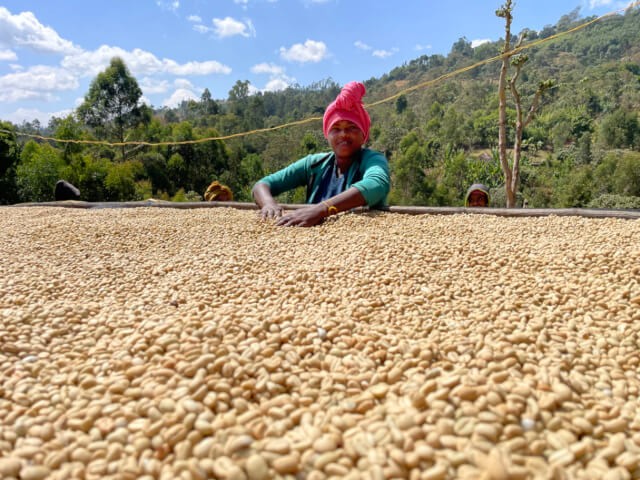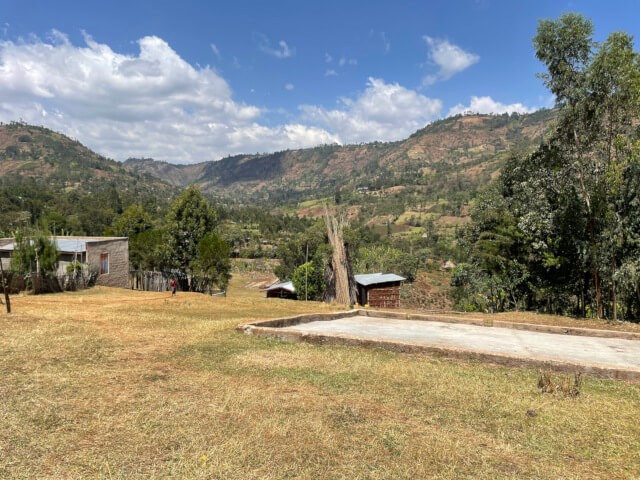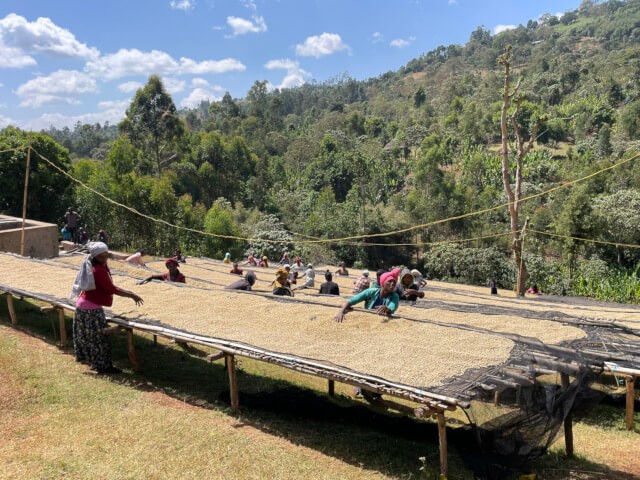Some Ethiopian coffee brands are named after washing stations.
What is this washing station and why is it necessary?
What is this washing station and why is it necessary?
Ethiopia's coffee farmers are smallholders

Many Ethiopian producers are small family farms, with the average farm being less than one hectare in size.
Very few farmers have the facilities to sort (process) the coffee cherries they harvest themselves.
Therefore, a sorting facility/washing station is needed.
The Washing Station purchases its coffee cherries directly from hundreds of smallholder farmers in the area.
Each farmer's coffee beans are delivered to the washing station on the same day they are harvested, tagged with the date and grade, and then processed using traditional full washed or natural refining methods.
Farmers are free to choose either the agricultural cooperative or an individually run washing station that will buy their produce at a higher price.
In addition, in order to produce high-quality beans of grade 1 or grade 2, the washing station carries out thorough sorting, including waterway sorting and screening, and also removes defective beans by hand.
In this way, the washing stations, which produced high-quality coffee every year, became well known.
Very few farmers have the facilities to sort (process) the coffee cherries they harvest themselves.
Therefore, a sorting facility/washing station is needed.
The Washing Station purchases its coffee cherries directly from hundreds of smallholder farmers in the area.
Each farmer's coffee beans are delivered to the washing station on the same day they are harvested, tagged with the date and grade, and then processed using traditional full washed or natural refining methods.
Farmers are free to choose either the agricultural cooperative or an individually run washing station that will buy their produce at a higher price.
In addition, in order to produce high-quality beans of grade 1 or grade 2, the washing station carries out thorough sorting, including waterway sorting and screening, and also removes defective beans by hand.
In this way, the washing stations, which produced high-quality coffee every year, became well known.
A washing station known in the Sidamo region

The Sidamo region in southern Ethiopia is known for producing high quality coffee, and is said to be the standard for Ethiopian washed coffee.
Located in this area is the Bonazria Washing Station owned by Tracon Trading Co., Ltd. Tracon, which exports high-quality Ethiopian coffee to the international market, owns an environmentally friendly washing station and is committed to sustainable production of high-quality coffee.
Located in this area is the Bonazria Washing Station owned by Tracon Trading Co., Ltd. Tracon, which exports high-quality Ethiopian coffee to the international market, owns an environmentally friendly washing station and is committed to sustainable production of high-quality coffee.
At CROWD ROASTER , we stock coffee from Bonazria Washing Station.
In 2008, Tracon Trading acquired the Bonazria Washing Station along with the farmland, and while renovating it, has been working on producing high-grade coffee. Thanks to the renovation, the trees on the farm are young, which is an advantage in terms of production volume and quality, and the coffee produced there strongly reflects the flavor characteristics unique to this region, benefiting from the microclimate of Sidamo.
During the harvest season, cherries are delivered not only from the company's own farmland but also from small farms in the surrounding area.The cherries are re-sorted, floaters are removed, and the pulp is sorted in a pulping machine to remove the pulp, before being turned into wet parchment.
After that, it goes through a fermentation process and washing process in a waterway before being transported to the African beds. We use a method that is based on the traditional washed coffee process, but we set standards for the quality of the water used in the process and store and use clean water that meets these standards.
In addition, we ensure a more stable production of high-quality coffee by always taking measurements to ensure the best possible method, such as managing the time during the fermentation process and checking the moisture content and water activity at the end of drying.

The washing station is surrounded by hills and is exposed to cool mountain breezes, which are used to dry the washed coffee over a period of about two weeks. Some African beds are equipped with agricultural shades for drying in the Hikaru , while even regular African beds are dried slowly over time using blinds to suit the sunlight and temperature, aiming for ideal quality.

The citrus flavor unique to Sidamo, the sweetness of white chocolate, and the rich mouthfeel create a satisfying cup balance. We recommend this coffee as a way to fully enjoy the charm of Ethiopia and Sidamo.
Please try ordering Bonazria Washing Station coffee from some of Japan's leading roasters!
2024.4.16
CROWD ROASTER


